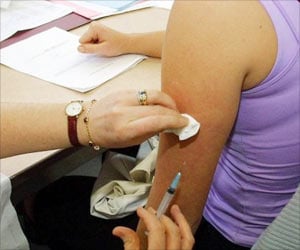A new drug screening system for Human Papillomavirus (HPV) is developed to identify potential drug targets and treatment for infections.
- Human Papillomavirus (HPV) infections are most commonly responsible for sexually transmitted infections.
- A drug screening system using genetic engineering was developed to aid cure for HPV infections.
- The HPV drug screening assay system can help to identify potential drug targets and treatment for HPV infections.
TOP INSIGHT
The newly developed HPV drug screening assay system will help in identifying novel drug targets and treatment for HPV infections.
Around six million people in the United States are diagnosed with HPV infections every year.
Even though physicians and health care professionals are on the verge of developing new treatments to cure HPV infection, there is still no specific treatment for the infection.
Developing a Cure for HPV
Mart Toots and colleagues of the Icosagen Cell Factory Ltd. and University of Tartu, Estonia have developed a new method involving the use of a full HPV genome and three stages of a viral life cycle, which can occur during HPV infection.The new drug screening system was developed using genetically engineered HPV genomes by adding ‘reporter genes’ which can code for bioluminescent proteins and allows easy monitoring of the virus growth at any life cycle stages.
The new system was able to demonstrate more than 1000 chemical compounds in HPVs grown in cells that were derived from the human tissue. A number of compounds that blocked the growth of some HPV subtypes were also identified.
The authors said that, "We are confident that the developed HPV drug screening assay system will allow to identify several different novel drug targets and small molecule drugs."
"These could be used effectively for elimination of cutaneous and mucosal low-risk and high-risk Human Papillomavirus infections, therefore addressing serious unmet medical need in the society, like benign and malignant HPV positive epithelial tumors."
Interesting Facts on HPV infections
- 80% of people have Human Papillomavirus (HPV) infections, as they are transmitted through intimate skin-to-skin contact, and can be passed from a person who has no symptoms or signs of the infection.
- HPV usually cause genital warts that are harmless and sometimes can even lead to the development of cancers (cancer of the cervix, vagina, anus, penis and even cancer of the throat and tongue).
- 70% of HPV infections can result in cervical cancer. Specific HPV screening tests can help to diagnose people who are at an increased risk of cervical cancer.
- There is no specific treatment for HPV. However, vaccination can protect against HPV cancers.
- The Centers for Disease Control and Prevention (CDC) recommends two doses of HPV vaccine for children between the age of 11-12 years to protect against cancers caused by HPV.
- Toots M, Ustav M Jr, Männik A, Mumm K, Tämm K, Tamm T, et al. (2017) Identification of several high-risk HPV inhibitors and drug targets with a novel high-throughput screening assay. PLoS Pathog 13(2): e1006168. DOI: 10.1371/journal.ppat.1006168
 MEDINDIA
MEDINDIA




 Email
Email









